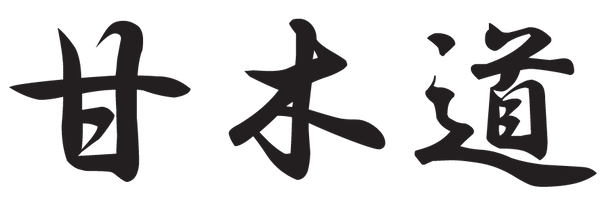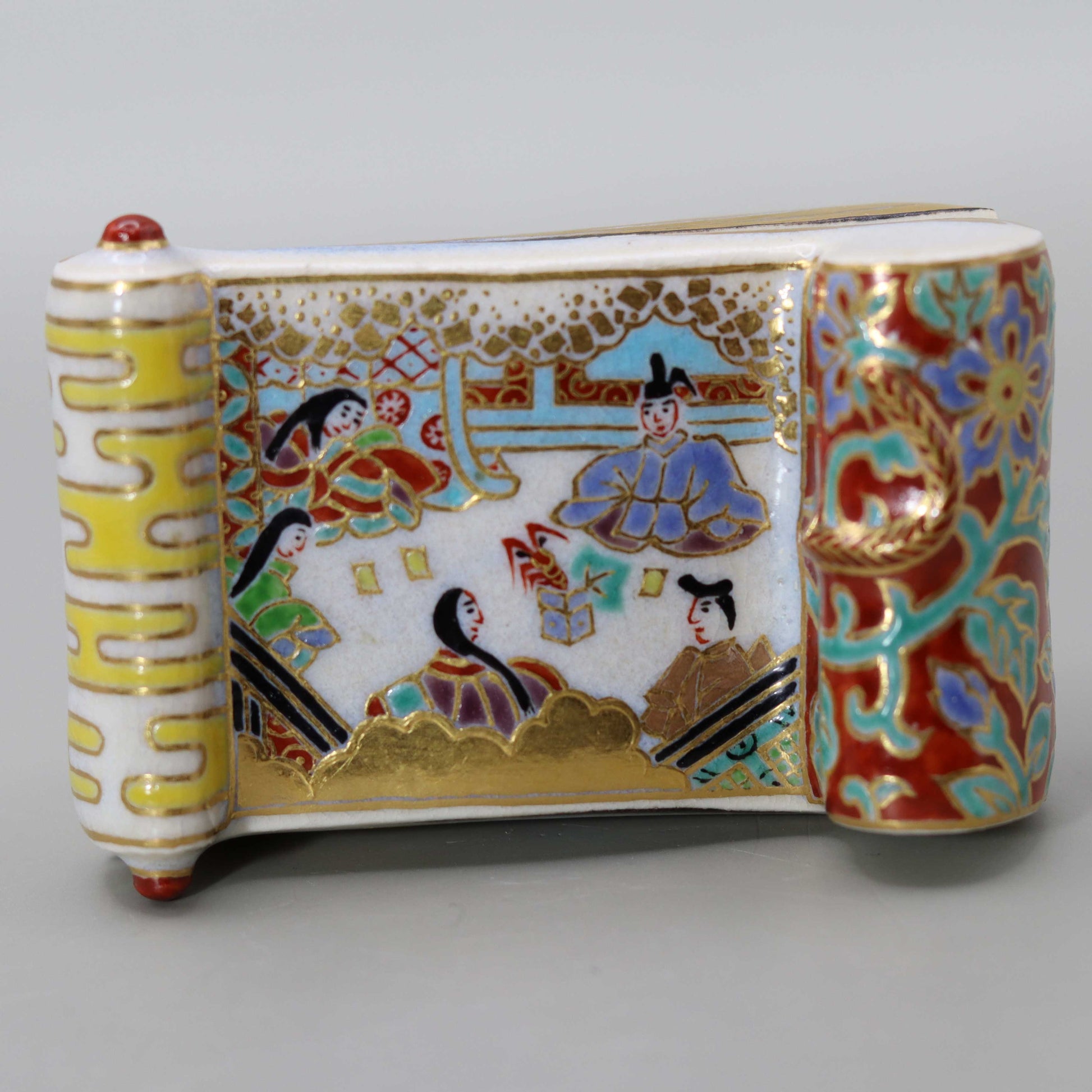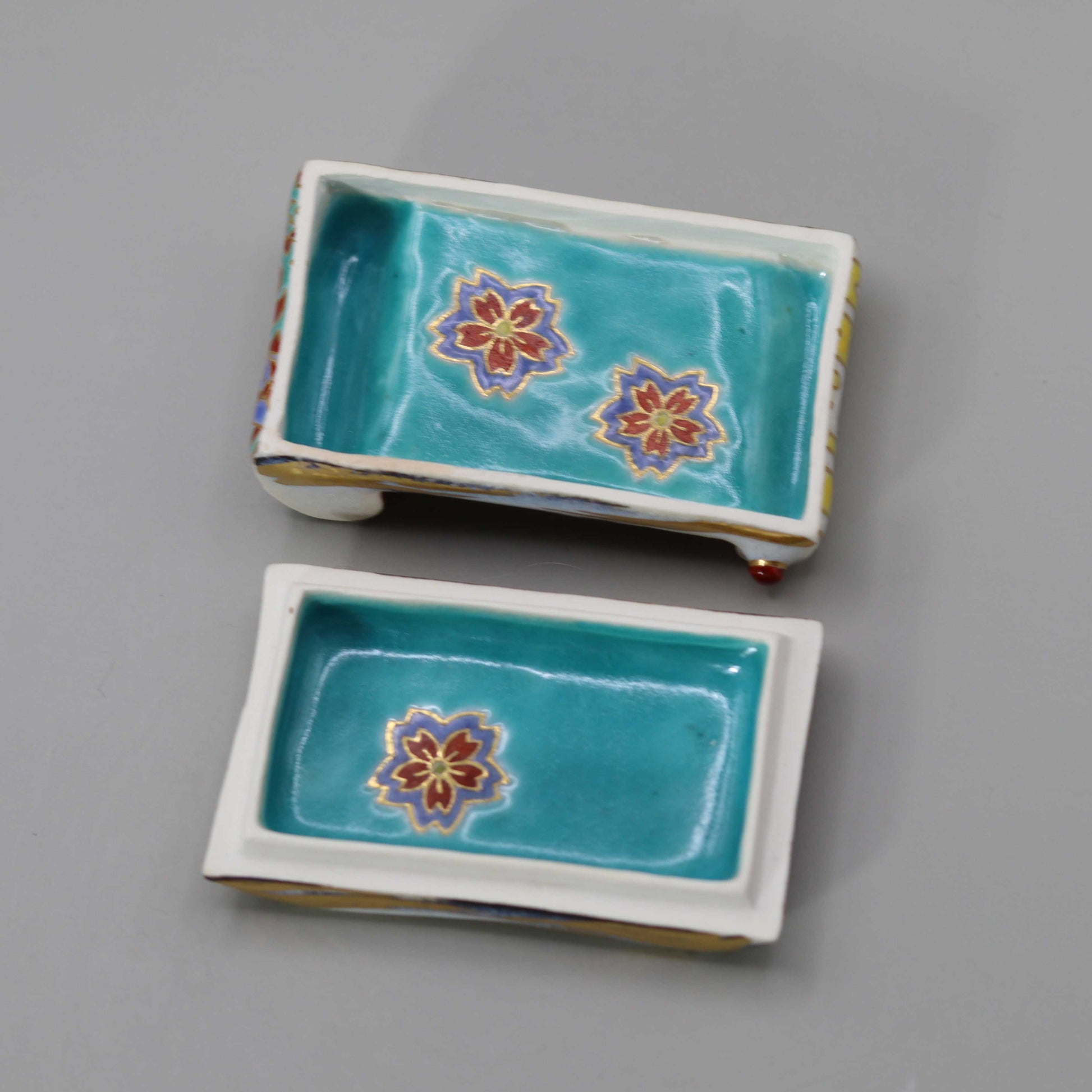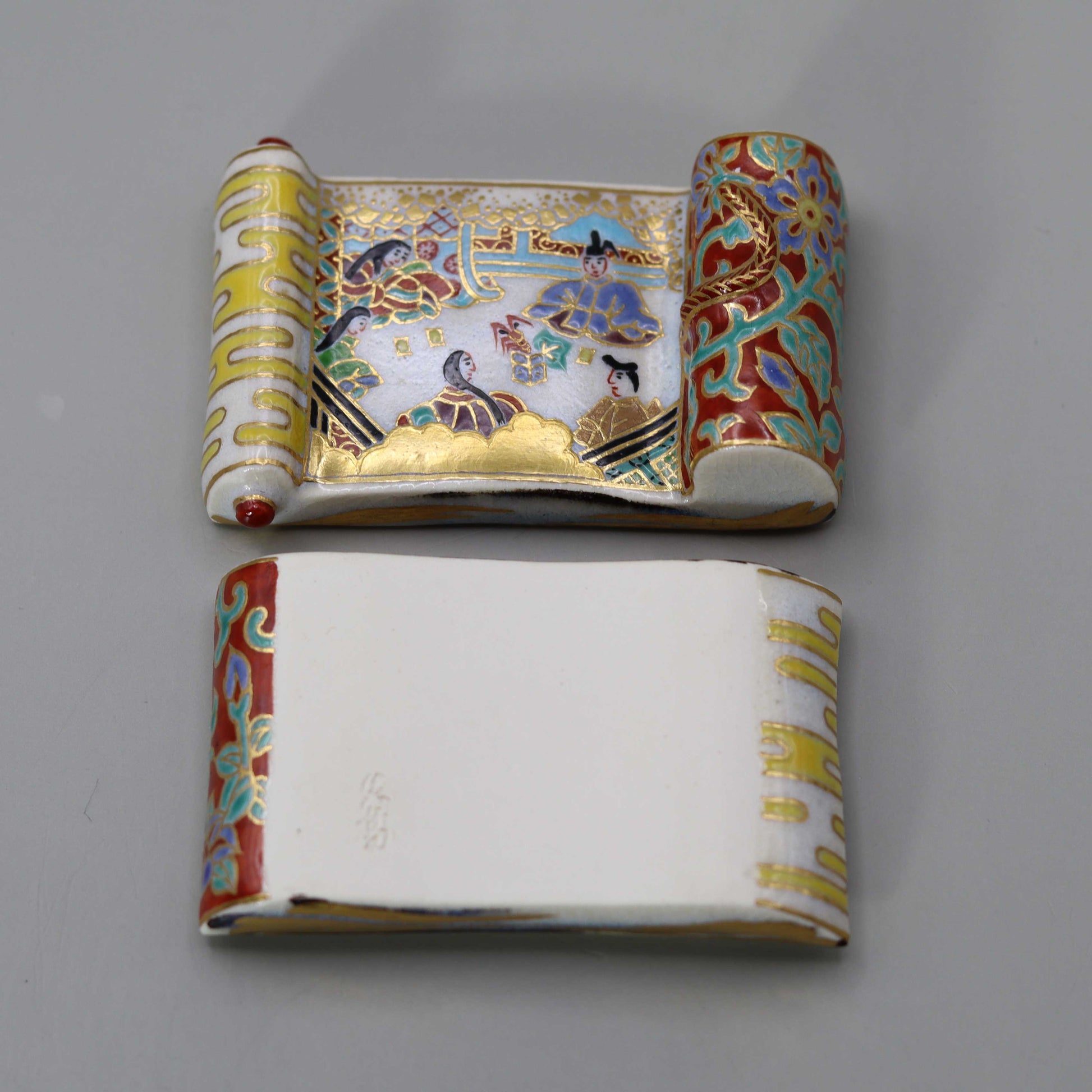Tale of Genji incense holder by Miyagawa Kosai
Tale of Genji incense holder by Miyagawa Kosai
Couldn't load pickup availability
Height: 3.0cm Width: 5.0cm x 7.0cm
The "Colored Genji Emaki Incense Go (Miyagawa Kosai)" is a particularly elegant and beautiful piece of incense go for use in the tea ceremony. An incense go is a container for holding incense used before the charcoal in the tea ceremony, and in modern times, when the charcoal is often omitted, it is common for it to be displayed in the tokonoma alcove. An incense go placed in the tokonoma alcove reflects the taste and aesthetic sense of the host at the tea ceremony, and is also an object of appreciation for the host's taste for the incense. This "Colored Genji Emaki Incense Go" is a masterpiece that truly embodies the aesthetic sense of the host and historical design.
The Tale of Genji and the artistic significance of incense containers
The Tale of Genji, written in the 11th century during the Heian period by Murasaki Shikibu, a lady-in-waiting to Empress Shoshi, daughter of the regent Fujiwara no Michinaga, is a literary work that depicts the elegant and complicated life of Heian aristocrats, centering on the character of Hikaru Genji. This story is widely regarded as one of the greatest masterpieces of Japanese literature, and about 150 years after the story was written, it was expressed as a painting in the Tale of Genji Illustrated Scroll. The Tale of Genji Illustrated Scroll was created in the 12th century and is one of the oldest illustrated scrolls in Japan, with scenes selected from each of the 54 chapters delicately depicted. This incense holder is decorated with a design that reproduces the atmosphere of the Tale of Genji Illustrated Scroll, and when used to decorate a tea ceremony or tokonoma, it conveys its historical value and cultural depth. The scenes from the Tale of Genji depicted in this work convey the elegant atmosphere of aristocratic society in the Heian period, and exude a charm that invites the viewer into the world of the story. In particular, the beauty and melancholy of the story of Hikaru Genji are deeply expressed in the design of the incense container, elevating its value as a work of art rather than merely a tool. The notable appeal of this work is that it allows us to get a sense of the lives and emotions of Heian period aristocrats through the incense container.
The history and techniques of Makuzu ware
Makuzu ware is one of the representative schools of Kyoto ware supported by the long history of the Miyagawa family, and has developed and inherited various techniques for over 330 years. The beginning of Makuzu ware dates back to the Jokyo era (1684-1687), when Yukan Miyagawa Kobee Masakazu established a residence in front of the Chion-in Temple and began pottery. For generations, the Miyagawa family has covered the traditional techniques of Kyoto ware such as Ninsei copying, Kenzan copying, blue and white porcelain, iron painting, Kochi, and gold lining, but they have also adopted new styles in response to the needs and aesthetic sense of the times. In particular, Miyagawa Kosai has succeeded in further developing the beauty of Makuzu ware while inheriting the techniques cultivated by his successive Kosais. This "Iroe Genji Emaki Incense Box" is a work that makes full use of the traditional techniques of Makuzu ware, and is impressive for its delicate overglaze painting and the elegant design that evokes the Heian period. By incorporating the theme of The Tale of Genji, the deep cultural background of classical literature is brought to life in the present day, impressing viewers. The small incense container is packed with hundreds of years of techniques and history.
Incense containers as tea ceremony utensils and their aesthetic value
As a tea ceremony tool, an incense box plays an important role in a tea ceremony. When used in front of the charcoal, it brings elegance to the atmosphere of the tea room, and the scent of the incense tightens the atmosphere. However, even if the charcoal is not used, the incense box is displayed in the tokonoma alcove and becomes part of the atmosphere of the tea ceremony. This "colored Genji picture scroll incense box" symbolizes the aesthetic sense of such a tea ceremony and shines with a special brilliance in the scenery of the tea room. This incense box is not only valuable as a tool, but also as a work of art. The fusion of literature and picture scrolls from the Heian period is expressed in elegant colors, and it deeply moves the viewer. In addition to its practicality as an incense box, it is a work that can be appreciated according to the changing seasons and the taste of the tea ceremony, and it occupies a particularly high position among tea ceremony tools.
The traditions of the Miyagawa family and the future of Makuzu ware
The history of the Miyagawa family began in the Jokyo era, and from the Edo period through the Meiji and Taisho periods, to the present day, they have continued to produce pottery, mainly tea ceremony utensils and sencha tea utensils. In particular, from the time of the fourth generation Eiyo Kosai, Makuzu ware was established as a tea ceremony utensil, and many works were created that embody the spirit of the tea ceremony. This "Iroe Genji Emaki Incense Box" also follows the aesthetics of the tea ceremony and develops a unique expression on the theme of the Tale of Genji. Currently, Makuzu ware is highly regarded both at home and abroad, and is loved by pottery lovers in various countries, including the United States, the United Kingdom, France, and China. In addition, Miyagawa Kosai's works are held in many international institutions and art museums, such as the Victoria and Albert Museum (London), the Permanent Mission of Japan to UNESCO (Paris), and the Japan Foundation, and are highly regarded worldwide. This "Iroe Genji Emaki Incense Box" has the potential to be added to an international collection, and its elegant and refined beauty will continue to fascinate many people across the ages. This work is a work of art that combines history and art. The Tale of Genji picture scroll, which expresses the aristocratic culture of the Heian period, and the techniques of Makuzu ware, which conveys this culture to the present day, are beautifully combined to create a highly valued piece not only as a tea ceremony utensil but also as a work of art. The craftsmanship and elegant design incorporated into the incense box's finest details deeply reflect the spirit of the tea ceremony, and its beauty and depth will continue to impress viewers forever. This incense box is not only a family heirloom, but a masterpiece to be cherished for generations to come.
Share
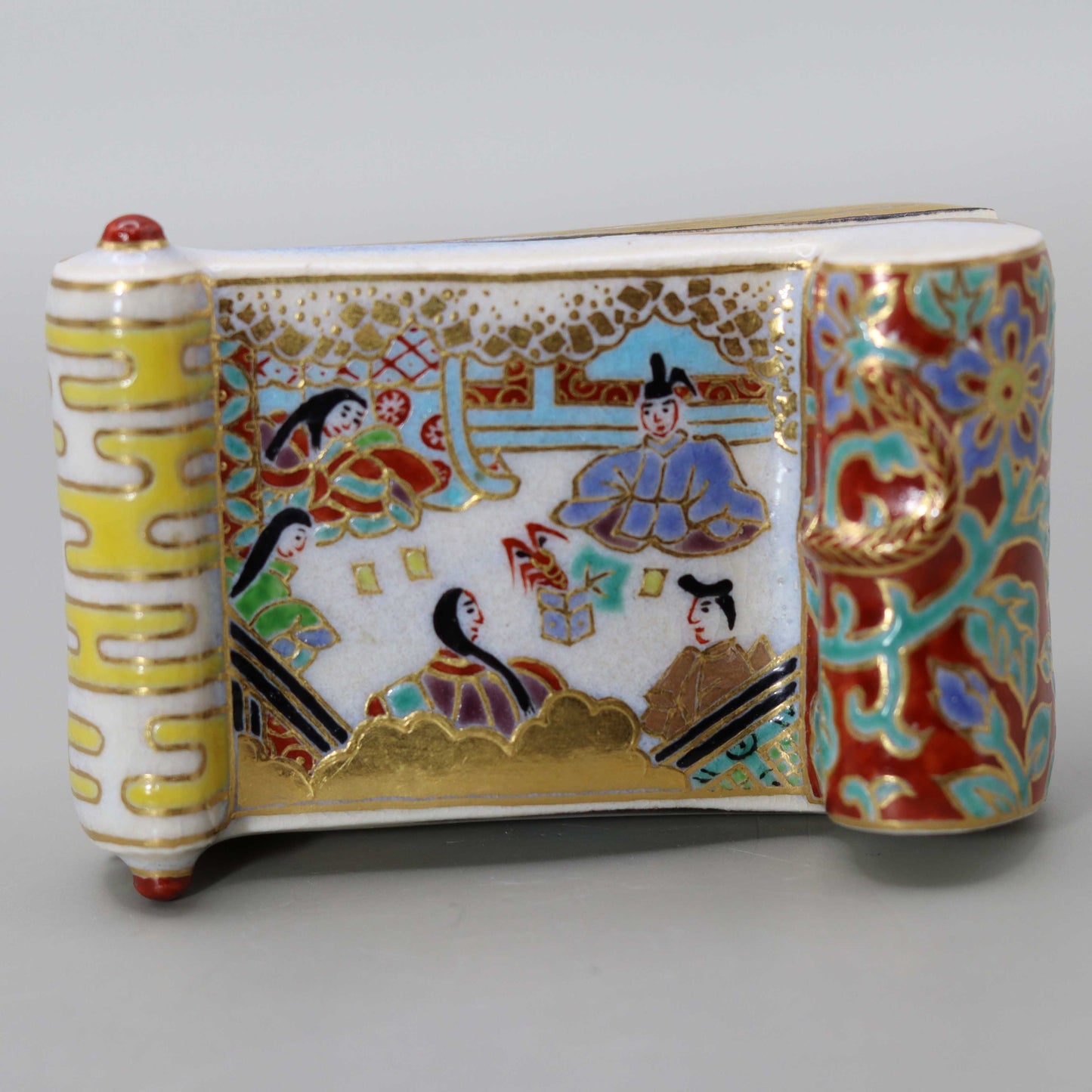
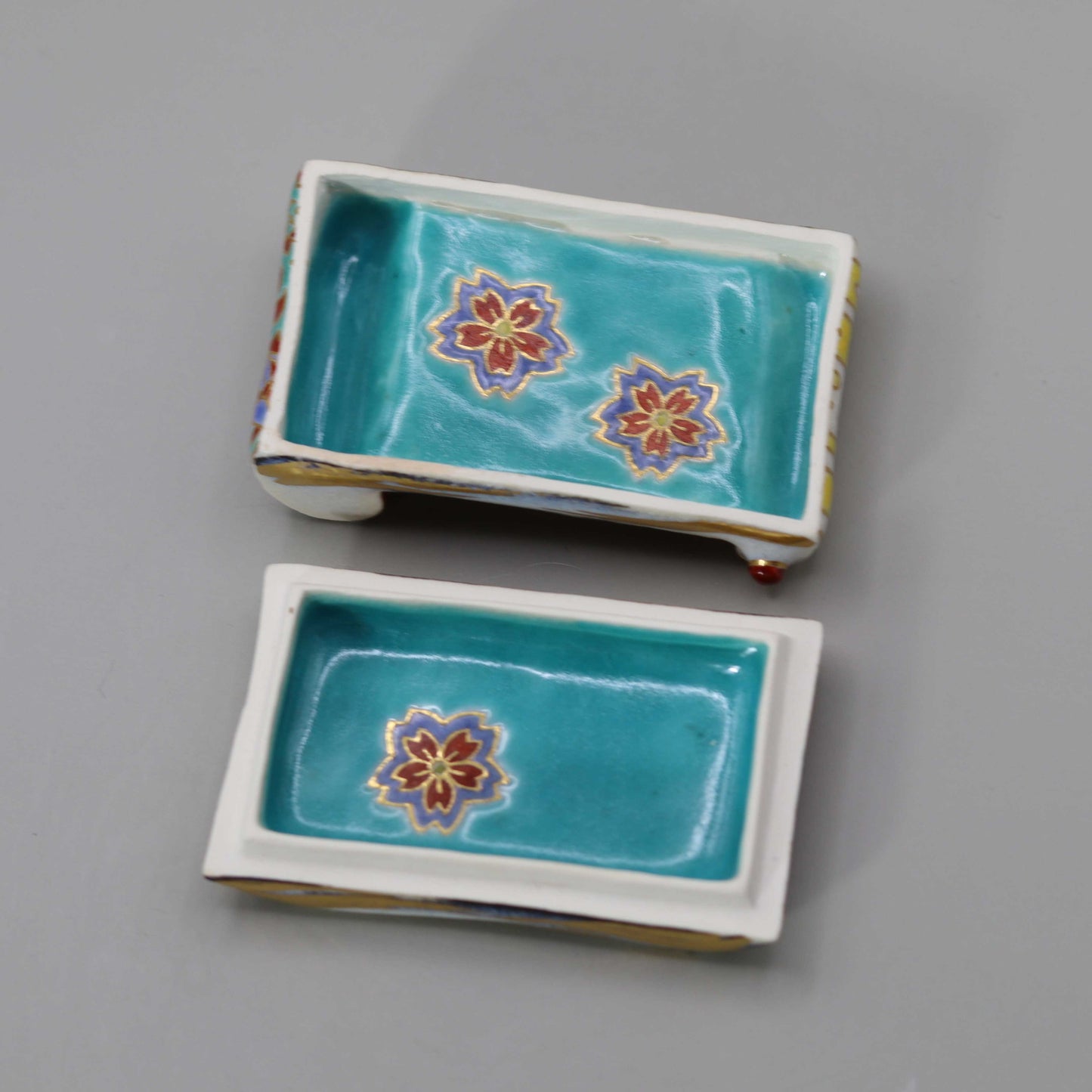
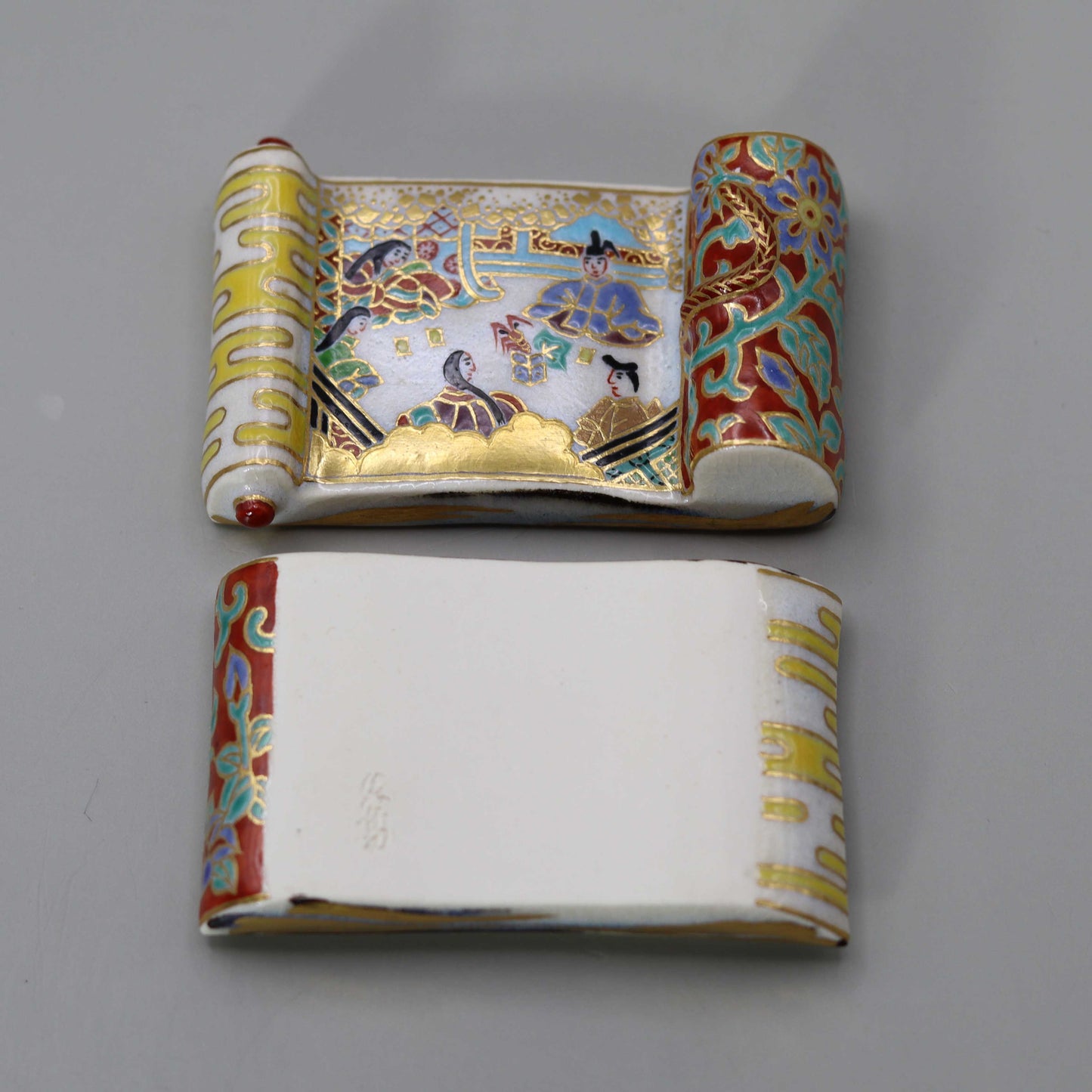
Multi-Column
-
[I will send it to you quickly and carefully]
We carefully package each product in a way that suits it best.
Also, delivery times vary depending on the piece (vessel, etc.).
Items that already come with a box will be shipped within 1-3 days of the order date.
For items that require a box to be made after your order, it will take approximately 30 days for production to be completed and then shipped.
In either case, once we have confirmed your order, we will contact you by email to inform you of the delivery date.
-
[Requests when purchasing pottery]
Even products that look the same may differ slightly in color, shape, size, etc.
The way the glaze is used, the power of the kiln, the firing method, the season, and the humidity also affect the appearance of the pottery.
Please understand the individuality of each piece of pottery and enjoy the unique warmth of handmade.
